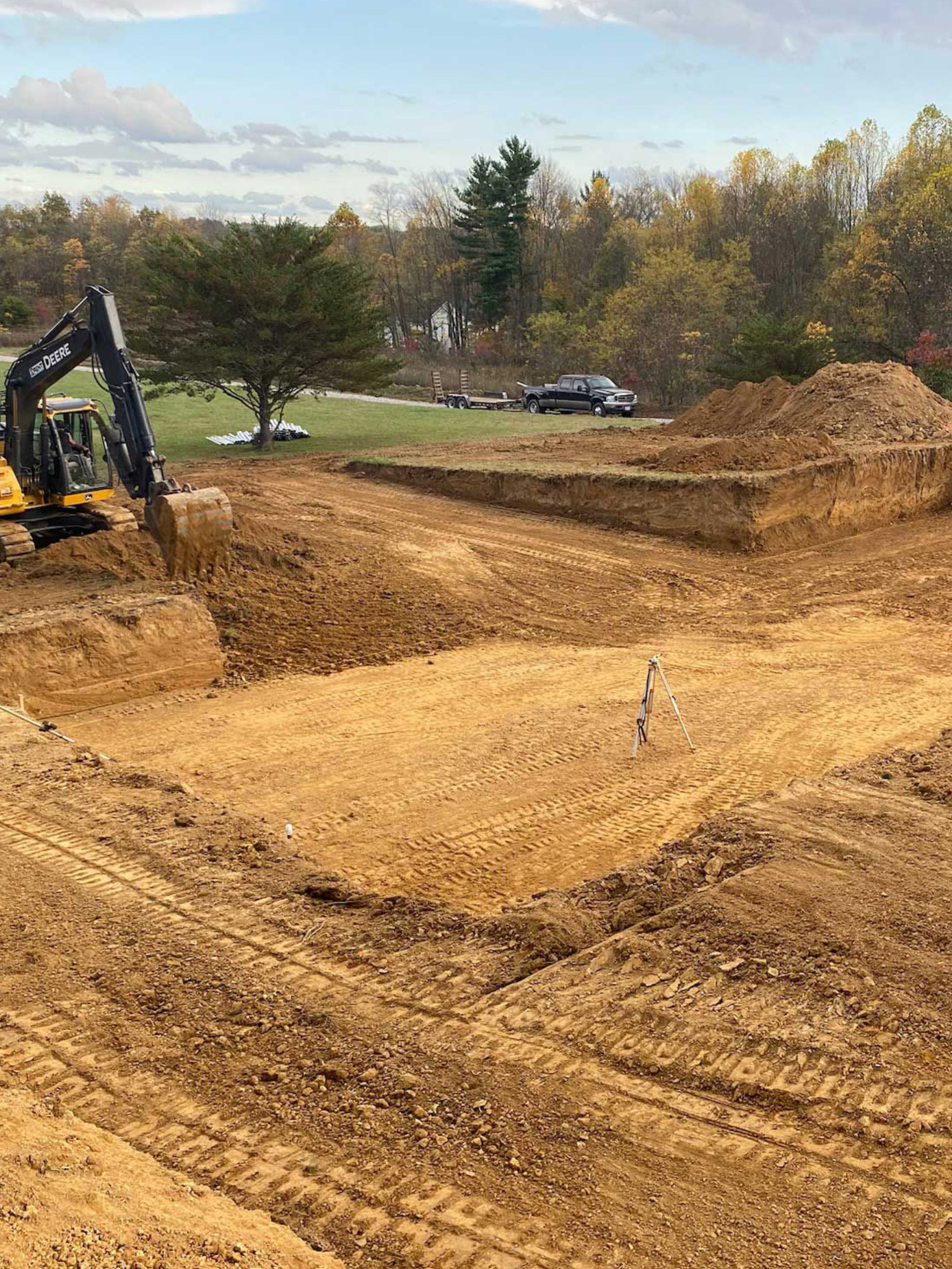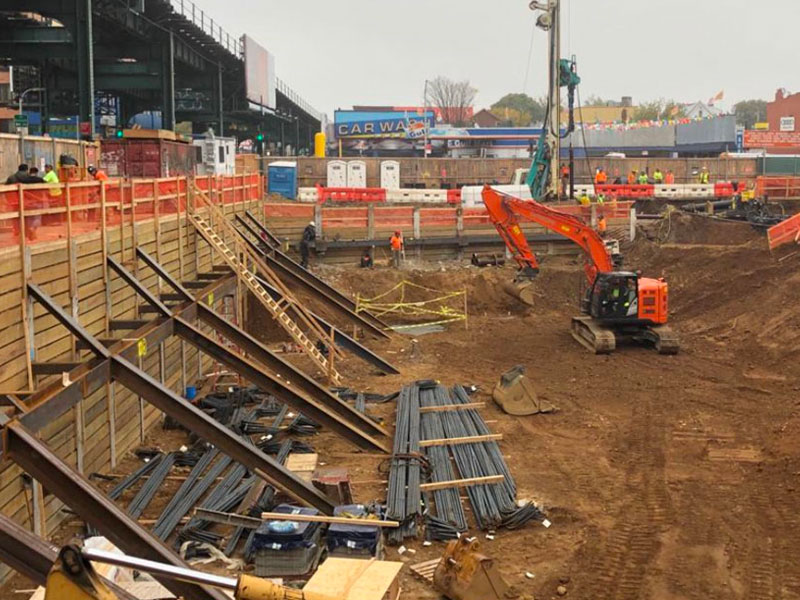Professional Septic Ohio - Relied On Septic System Specialists in Ohio
Wiki Article
Unveiling the Art of Excavation: Pro Tips for Safe and Effective Excavating
In the realm of excavation, the mastery of risk-free and productive excavating is an art form that needs expertise, adherence, and precision to well-known practices. As soil is transformed and earth is moved, the details of excavation disclose themselves, requiring a keen understanding of equipment, dirt make-up, safety and security procedures, and ecological considerations. The expertise needed to navigate these elements properly can indicate the distinction in between an effective excavation task and a potential disaster. By untangling the layers of this elaborate procedure, a globe of approaches and insights waits for those seeking to boost their excavation abilities to new heights.Significance of Proper Equipment
To make certain the safety and security and performance of any excavation project, making use of the appropriate devices is paramount. The right devices not only enhance efficiency but also mitigate dangers connected with excavating. Excavation jobs vary in range and intricacy, ranging from small domestic landscaping jobs to massive construction tasks. Despite the project dimension, having the right tools can make a substantial distinction in the outcome.These functional equipments come in different dimensions to match different job requirements. Mini excavators are perfect for smaller tasks, while bigger excavators deal with much more substantial tasks efficiently.
Besides excavators, various other crucial equipment includes dump excavators, plates, and trucks. Dispose trucks are essential for eliminating and delivering excavated products, while plates are made use of for digging narrow and deep trenches. Excavators master jobs that call for pressing huge amounts of dirt or debris. By buying the ideal tools, excavation projects can be completed securely, promptly, and with precision.
Comprehending Soil Structure
A comprehensive grasp of soil make-up is fundamental for performing excavation jobs with precision and safety and security. Understanding the different sorts of dirt is crucial as it straight impacts excavation methods, equipment selection, and total project performance. Dirt composition normally includes four major components: sand, silt, clay, and raw material. Each element has distinct homes that affect how dirt responds to excavation procedures.Sand particles are the biggest and offer good drain however use little cohesion. Silt fragments are smaller sized than sand yet bigger than clay, offering modest water drainage and communication. Clay bits are the smallest and supply high cohesion yet bad drain. Organic issue, such as decomposing plant material, impacts soil fertility and stability.
Before starting excavation, conducting soil tests to establish its structure and attributes is vital. This details assists in selecting the proper devices, applying safety and security procedures, and developing excavation strategies tailored to the details soil conditions - lancaster excavation. By recognizing dirt make-up, excavation specialists can improve job end results while making look at this website sure safety and adherence to finest practices
Precaution and Protocols
Recognizing soil composition is the foundation upon which precaution and procedures for excavation jobs are constructed, making certain the well-being of workers and the success of the endeavor. There are several key steps that have to be applied to mitigate risks and protect against mishaps. when it comes to safety and security throughout excavation.First and primary, before any kind of digging begins, a comprehensive inspection of the site ought to be carried out to determine any kind of possible dangers such as below ground utilities, unpredictable dirt conditions, or neighboring structures that can posture a threat. It is vital to have a skilled individual supervise the excavation process to ensure that all safety and security procedures are followed purely.
Furthermore, all workers entailed in the excavation needs to be correctly trained in risk-free digging techniques and the correct operation of devices. By adhering to these security actions and procedures, excavation projects can be finished successfully and without case.
Efficient Excavation Planning
When beginning on an excavation task, precise preparation is important to guarantee performance, security, and effective outcomes. Efficient excavation preparation includes several key steps that are important for the smooth implementation of the job.When the website evaluation is full, the following step is to develop a clear timeline and timetable for you can find out more the excavation activities. This consists of identifying the sequence of jobs, equipment requirements, and manpower allotment. Correct scheduling aids stay clear of hold-ups and ensures that the project remains on track.

Furthermore, communication amongst all employee is vital during the planning phase. Clear instructions, normal updates, and reliable coordination are essential for a successful excavation project. By investing time and initiative in thorough planning, excavation teams can considerably enhance productivity, lessen threats, and achieve effective end results.

Handling Environmental Considerations
With raising focus on environmental sustainability in building check methods, handling ecological factors to consider has actually come to be a crucial facet of excavation jobs. Excavation tasks have the possible to influence the surrounding setting via dirt disintegration, debris drainage, habitat disruption, and contamination of water sources. To mitigate these risks, it is important to carry out best techniques that focus on environmental defense.
In addition, proper waste management is critical to stop dirt and water contamination. Executing treatments for the disposal of harmful products, recycling of waste materials, and decreasing using damaging chemicals can dramatically decrease the ecological influence of excavation tasks. By integrating these practices into excavation preparation and execution, building firms can make sure that their projects are not just secure and efficient but also eco liable.
Final Thought
Finally, grasping the art of excavation requires a detailed understanding of correct tools, soil structure, precaution, and efficient planning. By complying with these standards and taking into consideration environmental factors, excavations can be conducted safely and effectively. It is vital to focus on safety and productivity in every digging task to ensure effective outcomes.As dirt is transformed and earth is relocated, the ins and outs of excavation reveal themselves, requiring an eager understanding of equipment, dirt structure, safety and security procedures, and environmental factors to consider.To guarantee the safety and security and effectiveness of any excavation project, utilizing the proper tools is vital.A thorough understanding of soil structure is basic for carrying out excavation jobs with accuracy and safety and security. Recognizing the different types of dirt is essential as it directly affects excavation approaches, devices option, and general job efficiency. By understanding soil make-up, excavation specialists can boost task outcomes while guaranteeing security and adherence to finest practices.
Report this wiki page